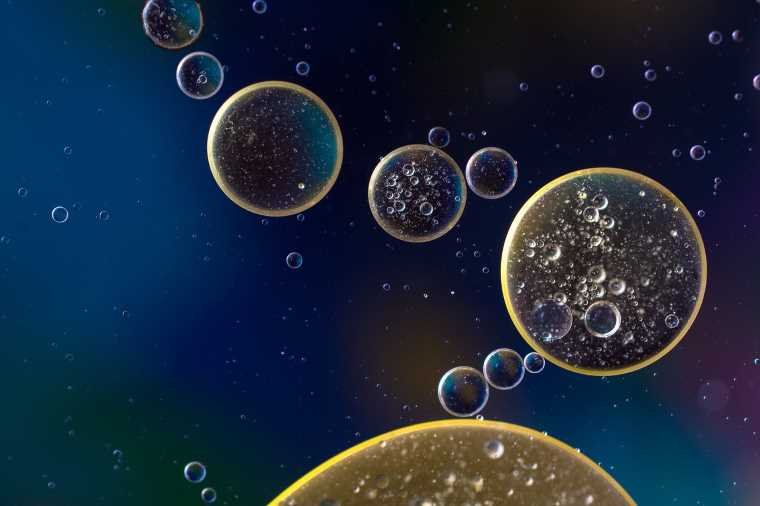Harvard researchers say they have developed a programmable metafluid they are calling an ‘intelligent liquid’ that contains tunable springiness, adjustable optical properties, variable viscosity, and even the seemingly magical ability to shift between a Newtonian and non-Newtonian fluid.
The team’s exact formula is still a secret as they explore potential commercial applications. However, the researchers believe their intelligent liquid could be used in anything from programmable robots to intelligent shock absorbers or even optical devices that can shift between transparent and opaque states.
“We are just scratching the surface of what is possible with this new class of fluid,” said Adel Djellouli, a Research Associate in Materials Science and Mechanical Engineering at Harvard’s John A. Paulson School of Engineering and Applied Sciences (SEAS) and the first author of the paper. “With this one platform, you could do so many different things in so many different fields.”
Remarkable Attributes of an Intelligent Liquid Programmable Metafluid
According to the Harvard researchers, the key development behind their first-of-its-kind programmable metafluid is the elastomer spheres ranging from 50 to 500 microns that populate throughout the intelligent liquid. These customized spheres “buckle” under pressure, which radically changes the properties of the overall fluid. This includes changes to the fluid’s optical properties, its viscosity, and even its compressibility.
The researchers note that new classes of solid metamaterials can contain some of these same unique properties. However, incorporating these programmable characteristics into a fluid that can change to accommodate the shape of its container opens up a whole world of possibilities.
“Unlike solid metamaterials, metafluids have the unique ability to flow and adapt to the shape of their container,” said Katia Bertoldi, William and Ami Kuan Danoff Professor of Applied Mechanics at SEAS and senior author of the paper. “Our goal was to create a metafluid that not only possesses these remarkable attributes but also provides a platform for programmable viscosity, compressibility, and optical properties.”
Creating the Ultimate Programmable Metafluid
To create their intelligent liquid, the researchers fabricated hundreds of thousands of these deformable elastomer spheres filled with air. Next, the spheres were suspended in a medium of silicon oil. If done correctly, the researchers say that their varying-sized spheres would collapse under pressure, forming a “lens-like half sphere.” Similarly, when the pressure is removed, the spheres should return to their original shape.
In an effort to demonstrate the programmability of the resulting intelligent liquid, the researchers loaded it into a hydraulic robot gripper. As hoped, the robot hand was able to “sense” and pick up extremely fragile objects, including an egg, a glass bottle, and a blueberry, without breaking them, thanks to the variability of the metafluid.
“In a traditional hydraulic system powered by simple air or water, the robot would need some kind of sensing or external control to be able to adjust its grip and pick up all three objects without crushing them,” a press release announcing the research explains. “But with the metafluid, no sensing is needed. The liquid itself responds to different pressures, changing its compliance to adjust the force of the gripper to be able to pick up a heavy bottle, a delicate egg, and a small blueberry, with no additional programming.”
“We show that we can use this fluid to endow intelligence into a simple robot,” Djellouli added.
The researchers note that this programmable viscosity occurs because changes in pressure shift the intelligent liquid between a Newtonian and a non-Newtonian fluid. A Newtonian fluid changes its viscosity in response to changes in temperature, whereas a non-Newtonian fluid changes its viscosity in response to changes in pressure. Having a liquid that can be both is unprecedented.
“When the capsules are spherical, the metafluid behaves like a Newtonian fluid, meaning its viscosity only changes in response to temperature,” the press release explains. “However, when the capsules are collapsed, the suspension transforms into a non-Newtonian fluid, meaning that its viscosity will change in response to shear force — the greater the shear force, the more fluid it becomes.”
Along with the ability to change its viscosity under varying pressures and temperatures, the researchers say the metafluid also showed a remarkable ability to change its optical properties, shifting easily between transparent and opaque states. That’s because the normal bubble shape of the spheres scatters light and makes it opaque, similar to the cloudiness in aerated water. Conversely, when the spheres collapse into a lens shape, they allow light to pass through, making them and their liquid medium appear transparent.
Future Application Range from Optical to Mechanical Uses
Published in the journal Nature, the team’s research highlights a number of potential applications for their fluid. These include smart shocks that adapt to varying pressures, programmable robots, and a whole host of optical applications, including e-ink that can change color under pressure.
Moving forward, the team says they are investigating the new intelligent liquid’s acoustical and thermodynamic properties to discover its other secrets. Until then, they say their liquid is scalable and easy to fabricate, offering the potential to be used in commercial or industrial settings almost immediately.
“The application space for these scalable, easy-to-produce metafluids is huge,” said Bertoldi.
Christopher Plain is a Science Fiction and Fantasy novelist and Head Science Writer at The Debrief. Follow and connect with him on X, learn about his books at plainfiction.com, or email him directly at christopher@thedebrief.org.

